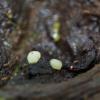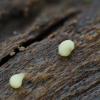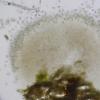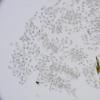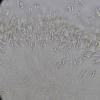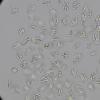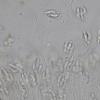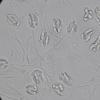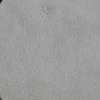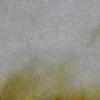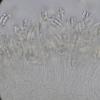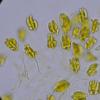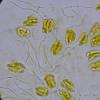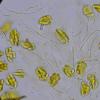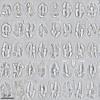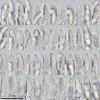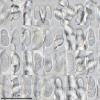
31-10-2025 09:19
 Lothar Krieglsteiner
Lothar Krieglsteiner
Can somebody provide me with a file of:Rogerson CT

30-10-2025 03:53
Ethan CrensonHi all,ô I would like an opinion on whether this

09-08-2025 13:13
 Maria Plekkenpol
Maria Plekkenpol
Hello,Yesterday I found these on burnt soil. Apoth

28-10-2025 19:33
 Nicolas Suberbielle
Nicolas Suberbielle
Bonjour û tous,Je voudrais votre avis sur cette r

25-11-2016 13:54
 Stephen Martin Mifsud
Stephen Martin Mifsud
Hi, I found numerous seeds of Washingtonia robusta

28-10-2025 22:22
 Bernard Declercq
Bernard Declercq
Hello.I'm searching for the following paper:Punith

28-10-2025 15:37
Carl FarmerI'd be grateful for any suggestions for this strik

28-10-2025 11:29
 Tanja BûÑhning
Tanja BûÑhning
Hello, I found this very small (ca 0,5mm) yellow
 Good afternoon.
Good afternoon.Does anyone know this anamorph?
It grew on very humid wood of Erica arborea in Madeira (Portugal). At first I thought it was a Vibrissea.
The conidiospores are together in groups of 6-8, with 1-3 septa. These groups remind me of the fruit of a nut. Over time they continue united, they do not separate, although there does not seem to be an envelope that keeps them together, only hyphae around them. They do not react to IKI, they are yellow.
Thanks in advance.

Let's see if someone is encouraged with new measurement data and some new photos.
The group of conidiospores is composed of 4 long cells with 3 septa and 4 short cells with 1 septum, the measurement of the group is (22.9) 24.2 - 28.8 (30.8) û (14) 15 - 17.5 (18.7) ôçm; Q = (1.4) 1.44 - 1.8 (2) ; N = 62; Me = 26.7 û 16.3 ôçm ; Qe = 1.6
The measurements of the long cells are (13) 14.2 - 18.9 (22.2) û (4.7) 4.9 - 6.3 (7) ôçm; Q = (1.9) 2.6 - 3.6 (4.4) ; N = 63; Me = 16.3 û 5.5 ôçm ; Qe = 3
The measurements of the short cells are (8.1) 9.9 - 13 (14.9) û (4.3) 4.6 - 5.4 (5.8) ôçm; Q = (1.7) 2 - 2.7 (3) ; N = 48; Me = 11.7 û 5 ôçm ; Qe = 2.4
I have the impression that at some point in development both parts are joined and then separate into the long and short units.
Any clues?
Miguel ûngel Ribes
cheers

I will check that.
Miguel ûngel Ribes

I think you got the right genus. The type of development and the formation of the conidia, I think, leaves no doubt that it is the genus Amallospora, created in 1897, or something very close.
The curious thing is that this genus only has one species, A. dacrydion, but with a set of conidia that is much larger, 50-75 microns, while mine are 27 x 16 microns.
With this position in the classification (Incertae sedis, Incertae sedis, Incertae sedis, Incertae sedis, Pezizomycotina, Ascomycota, Fungi) it is difficult to look for related genera.
Thanks a lot.
Miguel ûngel Ribes.

